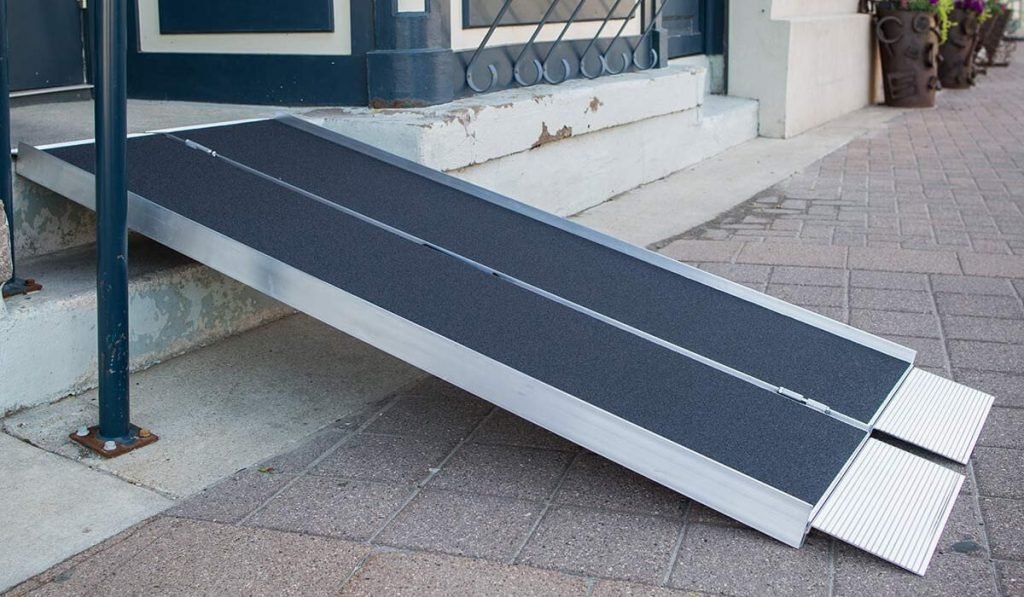Individuals who use wheelchairs might benefit from a portable wheelchair ramp in a variety of ways. It can really help them with mobility by offering them an alternative to asking a friend, relative, or career for help climbing up a few steps.
A wheelchair ramp is an excellent addition to any home. What do you do, though, if you arrive at your friend’s house and discover there is no wheelchair ramp for you? When this happens, it’s time to think about getting a portable wheelchair ramp – they’re just like regular ones, but they can be taken with you wherever you go!

Pros
A portable wheelchair ramp can be highly useful in a variety of situations. They are often compact, suited for use both indoors and out, and can be used with vehicles, curbs, and other thresholds. Many ramps are constructed to allow the individual portions to ‘telescope’ when they are compacted, resulting in a ramp that takes up much less area and is suitable for tight locations. Some ramps have both locking parts and built-in handles, which makes it easier to fold and transport the entire ramp, thereby increasing versatility.
Modern portable ramps are occasionally made of Glass Reinforced Plastic (GRP), a lightweight material that combines strength and flexibility. While certain ramps must be secured when used as thresholds, others, such as several of the rubber threshold versions, can be placed against the door sill, making them perfect for use with sliding doors. They can also be cut down to a more manageable size.
Cons
If you use a channel-type ramp, the caregiver will have to set up and take down two ramps, which might be difficult to maneuver.
Lower-quality portable ramps can put your safety at risk if the welding isn’t up to par or if sharp edges are left exposed. It’s also possible that they’ll come without instructions, so don’t scrimp on quality when shopping for a portable ramp.
Due to weight restrictions, channel or track ramps may not be suitable for power chairs or scooters.
Despite the fact that many portable ramps are made of lightweight materials and are designed for comfort and ease of use, some of them may be too heavy for older persons to lift. The narrower portable variants can pose issues since the chair’s wheels can become trapped, which is a serious issue with powered wheelchairs.
Type of Ramp
Wheelchair ramps come in a range of shapes and sizes. The most well-known are:
Threshold ramps, which are lightweight, movable ramps that range in height from 1 to 6 inches, are frequently used to assist people in passing through doorways that are higher than the walking surface. They’re also useful for getting around curbs and other raised landings.
Portable ramps that fold up and can be used on the go are known as folding ramps.
Suitcase ramps are designed to be utilized in entryways with stairs and include a built-in handle for portability. “They fold up and may be transported in the same manner as their namesake,” Creech says. Suitcase ramps range in length from 2 to 6 feet.
Modular ramps are often utilized in private dwellings and are made up of components that may be disassembled and reassembled. They’re usually built of aluminum and are larger and lighter than other ramp types.
Permanent ramps are constructed on-site and are usually composed of concrete or wood. Building permits are required for these ramps, and they cannot be altered after they are erected.
